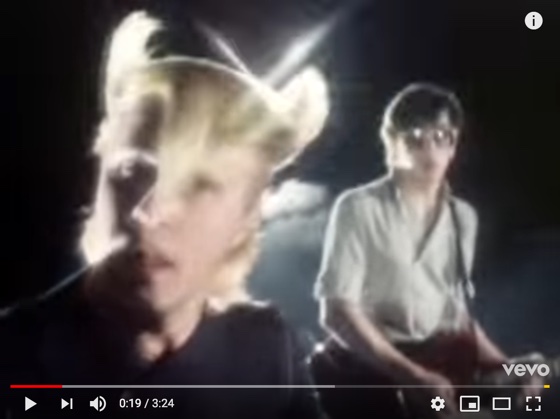
Recently, I shared the story of how I developed a fitness habit after years of failure. It was a major change in my life, in no small part because it was a shift in my identity.
There’s a darker side to the story that I didn’t share, though. A big part of my motivation to change came from constantly thinking I was going to die.
I was haunted by thoughts of falling over dead from a heart attack or a stroke. Statistically, it’s such an ordinary way to die, but going out that way terrifies me.
There I’d be, alone, helpless, hoping someone would find me, fading, and then … gone.
Yeah. Not cheery thoughts.
Strangely, the catalyst that brought on that dread was the way John Hughes died. I read the unfortunate news back in 2009 and it stuck with me.
The writer-director, who both described and defined our generation through films like Sixteen Candles, The Breakfast Club, and Ferris Bueller’s Day Off, died from a heart attack while on a morning walk in Manhattan. He was 59, and there were likely no warning signs before it happened.
Eventually, the dread accelerated. Even beginning a new attempt at fitness brought wry morbidity — wouldn’t it be ironic if I died while trying not to die?
Yes, Alanis, that actually would be ironic.
So for me, it was the untimely death of John Hughes that was my wake up call. I was born in 1967, which means I did middle school, high school, and college from 1980 to 1990. A consummate ‘80s kid.
If you were born somewhere around 1977, though, you would have done middle school, high school, and college from roughly 1990 to 2000 — a ‘90s kid. And your catalyst for the fear of death may well be Luke Perry, thanks to his untimely death from a stroke.
Maybe the Beverly Hills 90210 teen heartthrob Dylan McKay inspired a bit of rebellion in you. Or maybe you thought the show was trash but enjoyed it as a guilty pleasure. Regardless, you knew very well who Luke Perry was — and he was a Gen Xer just like the rest of us.
There were suicides, overdoses, and car crashes. But a stroke? That’s not what happens to people our age.
To paraphrase Blink 182, “What’s our age again?” Luke Perry was 52, and you’re either there or you’ll be there soon enough.
Hopefully you don’t feel old, but let’s face it, we need to start taking care of ourselves. Because heart attacks and strokes are exactly what happen to people our age.
We may well have an opportunity to live much longer than expected. But we have to live long enough to have a shot at it.
I was 26 when Kurt Cobain died at 27, and all of a sudden there was nothing remotely romantic about joining that club. I had so much more to do with the rest of my life.
I still feel that way at 51, except probably 10x more. And now there’s a bit more urgency.
We’ve all got important work to do, and we’re just now coming into positions of power and influence. We’ve lived long enough to develop both wisdom and integrity, which means maybe we fix this world that pretends we don’t exist.
How sweet would that be?
How Luke Perry’s death is a wake-up call for Generation X (Today)
Keep going-
P.S. Did someone forward this issue of Further to you? We’d love to have you join us by signing up here.
Take the long view for true fitness

By Brian Clark
My recent fitness journey has not been all rainbows and unicorns. It’s important to share the frustrations as well as the successful changes, because it’s not the successes that lead you to quit.
I started strength training back in early October while we were in France. About a month in, I strained my lower back (a lesson in not overdoing it while your core muscles are still weak). And that was the end for a while until I healed.
In early December, we settled in on the Gold Coast of Australia for two months, so I started lifting again. I didn’t miss a single workout for eight weeks, and got noticeably stronger. At the beginning of the ninth and final week, I felt pain at my left interior elbow while doing bench press.
It was medial epicondylitis, a common tendon injury from pushing with your arm, also known as golfer’s elbow. It took six weeks to heal. Ugh.
Take it in stride
The old me would have quit in frustration after injury and reverted back to bad habits. I know this because the last time I tried strength training was back in 2014, and after a shoulder injury I quit for four years.
Now I simply take the time to get better, and plan on the next training period. I’m just starting a 12-week program now that we’re back in Colorado.
Hopefully, no injuries this time, but you never know.
I credit my improved attitude to a shift in mindset. I have no short-term goals other than showing up. My overall objective is to be someone who works out. In other words, to simply keep improving physically until I no longer can.
Always a bit better
Yes, it sucks to have to pause due to annoying injuries. But each strength-training sprint has had the intended effect — I’ve gotten stronger.
I’m not losing all the benefits I gained from the last run; instead, I’m starting this new one stronger than I began the last one:
It seems that muscle has a “memory” that helps explain why people who get back into the gym after some time away from training find it easier to gain muscle compared with newbies.
Would I prefer to improve faster? Absolutely. Does it matter? Not if my goal is to simply remain fit for the rest of my life. I’m still stronger than I was this time last year, and that’ll be true this time next year if I keep patiently moving forward.
It’s not about having only good workout days (or months). It’s showing up again after a bad day (or a month of rest), and incrementally improving — because that’s just what you do. Enlarge your objective, expand your time frame, and take the long view.
What are you really afraid of missing?

By Trudi Roth
Fear of missing out — or FOMO — is a fascinating thing. Especially when you consider that it’s largely sparked by the digital device you carry around with you.
FOMO was coined by internet entrepreneur Caterina Fake back in 2011. That was (not coincidentally) about a year after social media went fully mainstream.
“Social media has made us even more aware of the things we are missing out on,” Fake wrote in the defining blog post. “You’re home alone, but watching your friends’ status updates tell of a great party happening somewhere.”
It’s right there smack dab in the middle of Maslow’s hierarchy of needs. We need social bonds, belonging, and a sense of connection with others. No problem with that, but up at the peak of the pyramid is self-actualization, which is by definition a solo venture.
So how will you scale that ultimate peak if you’re lugging around the burden of FOMO? In other words, are you really satisfying your need for connection on the way up to your best self, or are you chasing some lesser need?
The drug you’re really missing
You’ve probably heard that social media apps are designed to hook you with hits of dopamine, the feel-good brain chemical that rewards us for taking certain actions. So we reach for the phone to get another hit of what we think is social connection, only to discover status updates that invariably make us feel isolated, despite the chemical bump.
Worse, there’s nothing urgent or important about these notifications, and really no need to take any action at all. You’re simply being manipulated for the worse by technology that’s supposed to improve your life.
The good news is you’ve got the power to ignore the siren call from your back pocket and aim higher. The emotionally intelligent antidote to FOMO is JOMO — the joy of missing out — and it’s easier than you think to flip the switch to access it.
Better living through bliss
We all have it in us to disconnect. It happens naturally when big life changes happen, like the birth of a child or the death of a loved one.
Suddenly, perspective returns, and Becky’s vacation pics on Instagram just aren’t all that urgent.
Similarly, you can choose to ignore impulse distractions, alter your perspective, and settle into present-mind awareness. Instead of seeking a mindless hit of meaningless feel-good from your phone, you can find a way of being that’s way better.
And while we’re at it, we might as well reframe joy, too. After all, much like fear, joy is just a fleeting feeling, and not the fuel you need to propel you to your full potential.
Bliss, on the other hand, is a state of being. Or, as my mediation teacher calls it, “a supreme inner contentedness.”
When you take back your time by just saying no to shallow social media dopamine, you start tapping into your own bliss chemistry. By being more intentional and making conscious choices, you truly get your JOMO rising.
further: flashback

A Flock Of Seagulls – Space Age Love Song
A Flock of Seagulls, 1982
Never mind the hairdos and the synths — listen to that guitar. The talented young man in the big glasses was 17 when he joined the band. By the time Paul Reynolds turned 21, A Flock of Seagulls was a global sensation thanks to the hit I Ran, had won a Grammy, did a worldwide tour, and scored two more hit singles. Space Age Love Song was my favorite of those. (YouTube)
further: sharing
Please share this issue of Further. Thank you!
Please forward this issue of Further to friends and family who could benefit from it. Or click here to use the social sharing buttons at the bottom of this issue.
Thank you!
